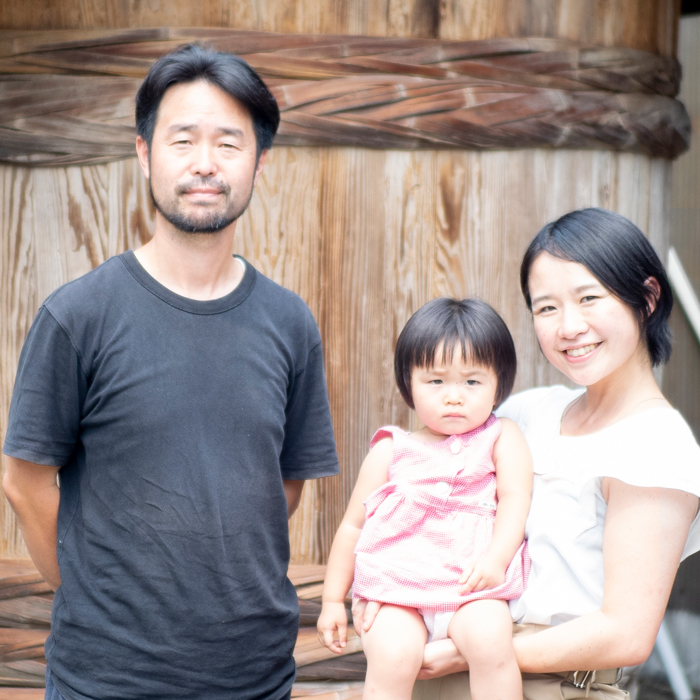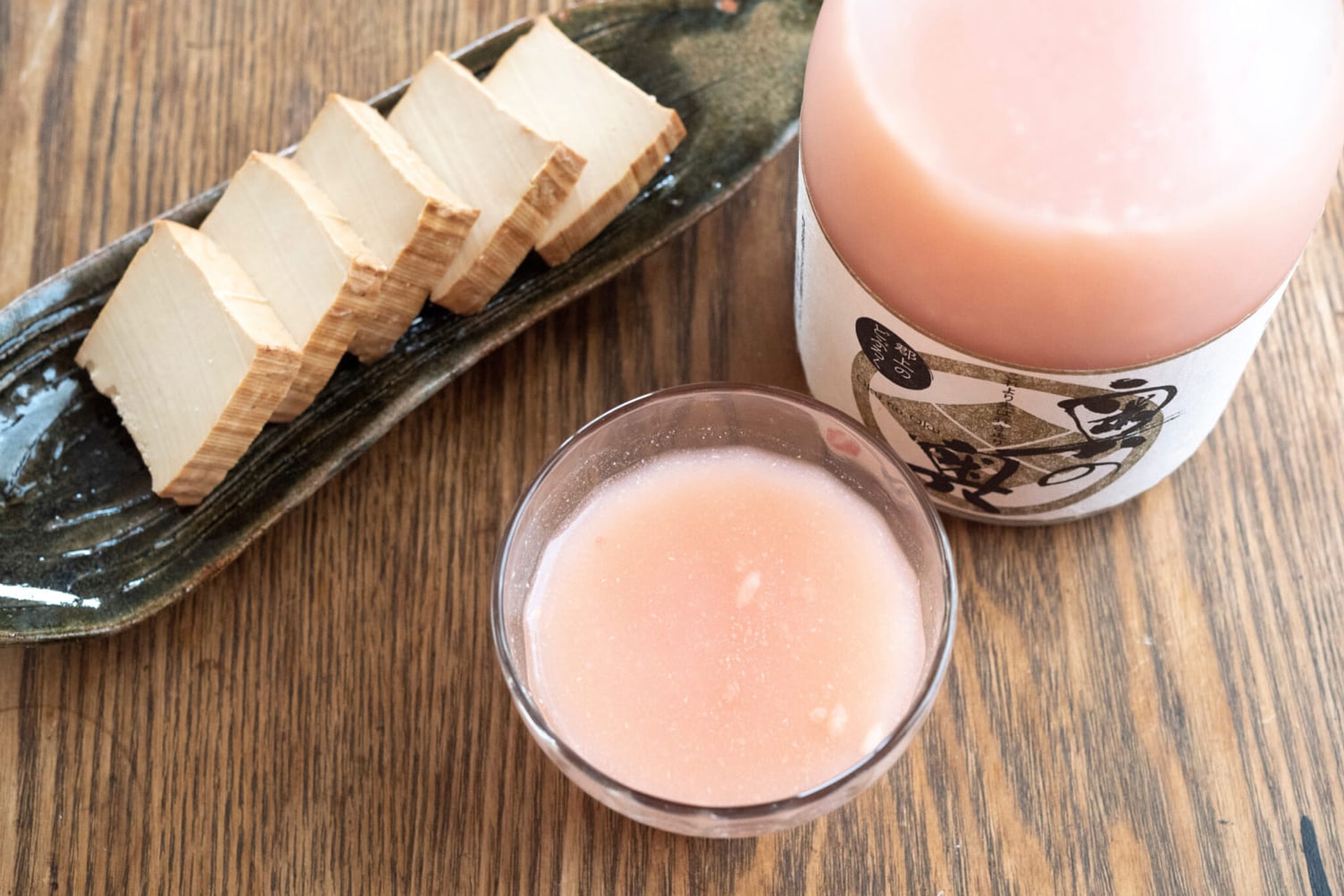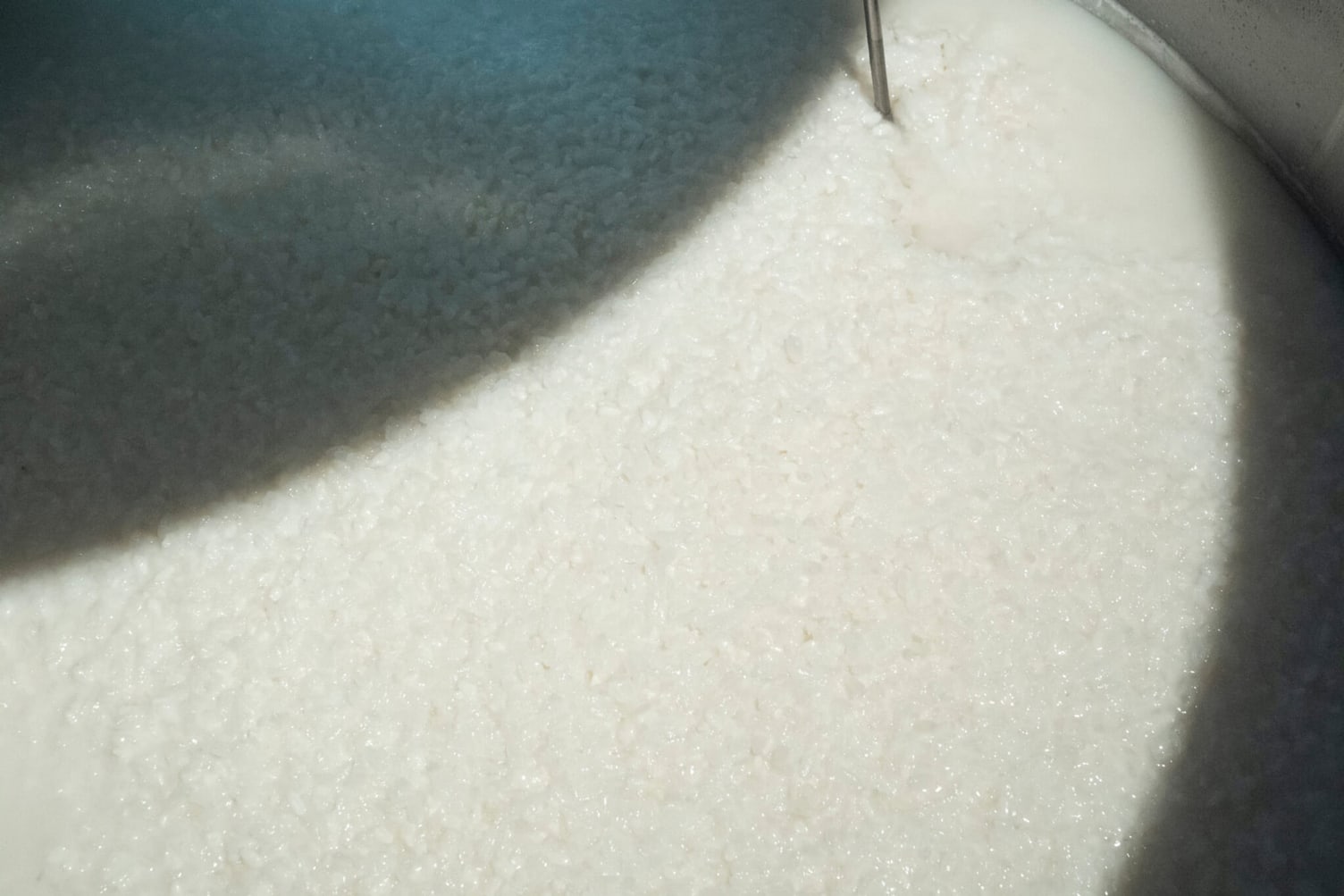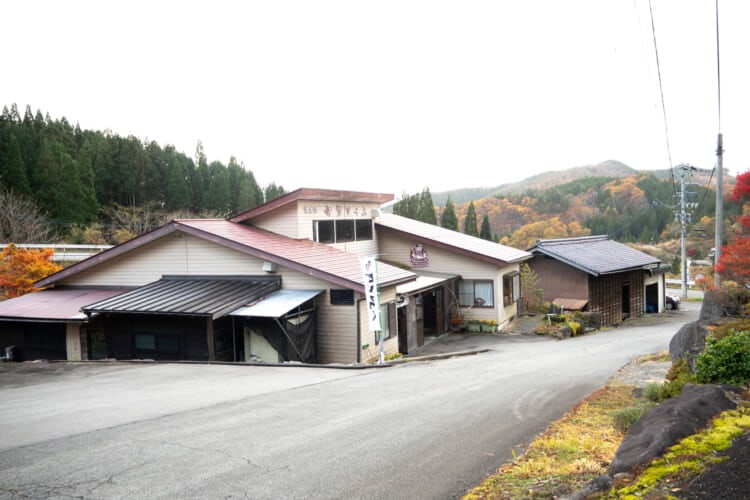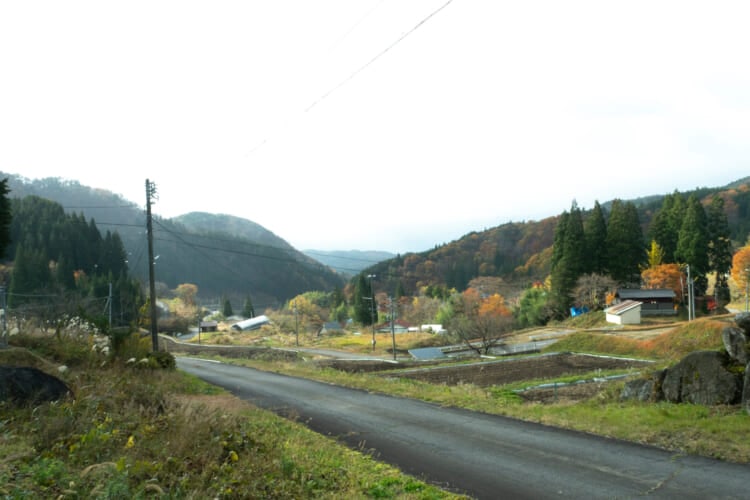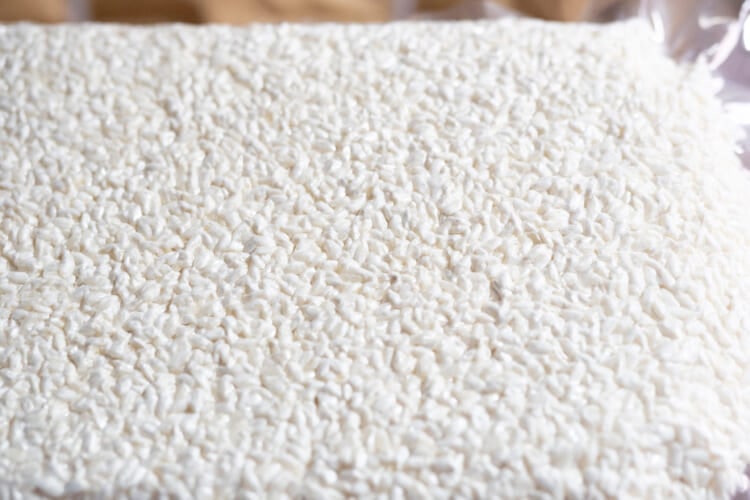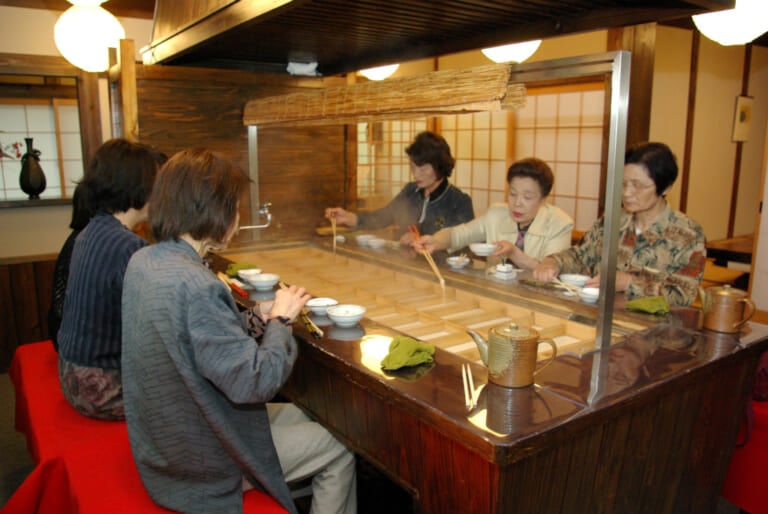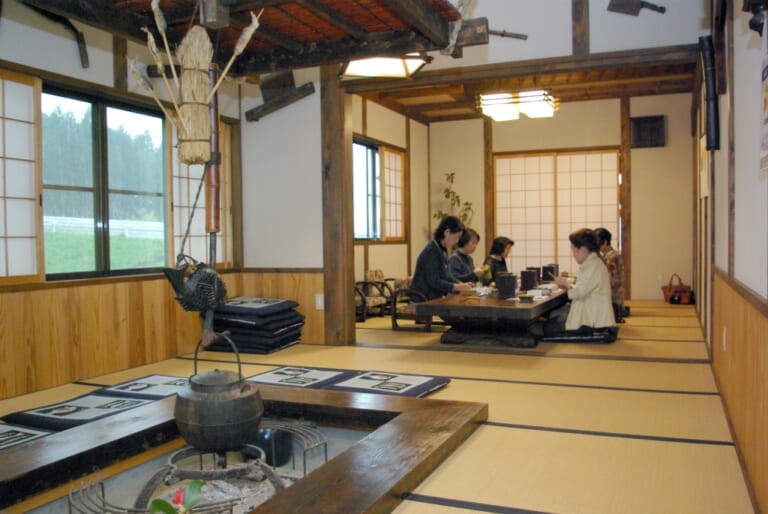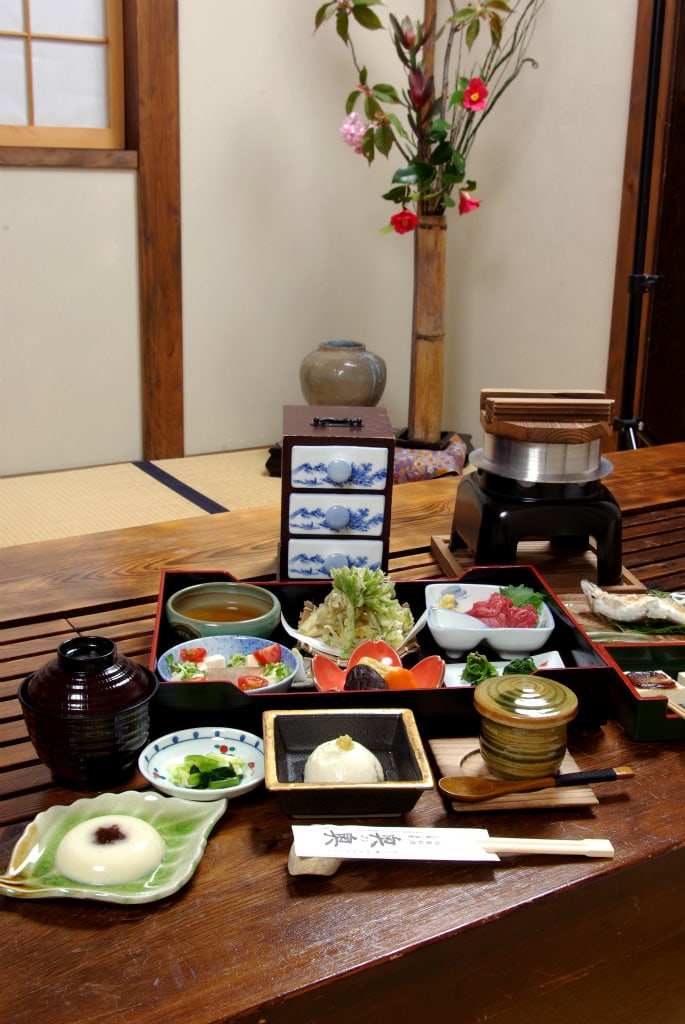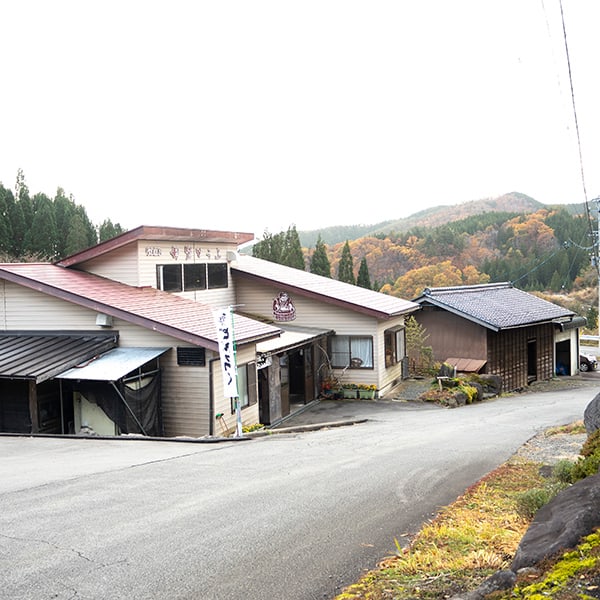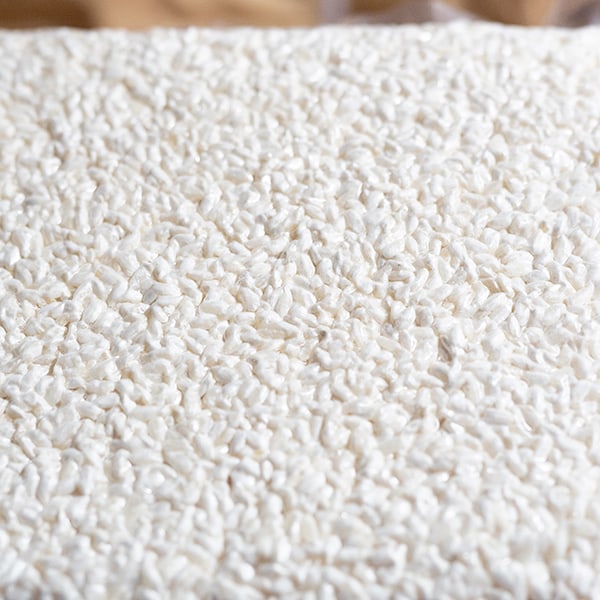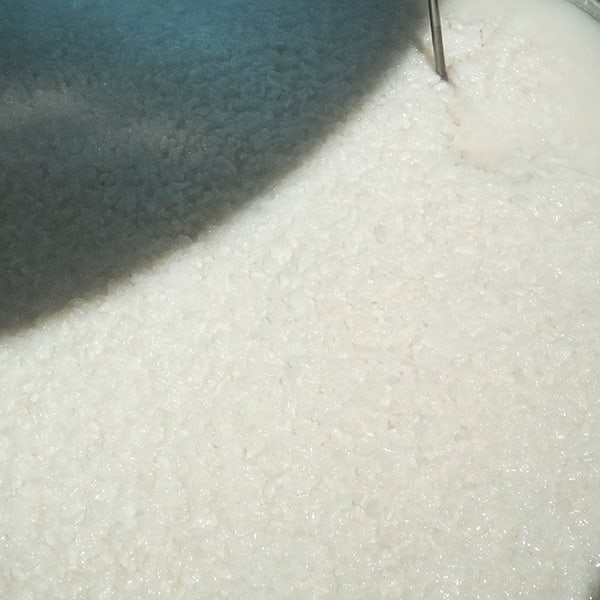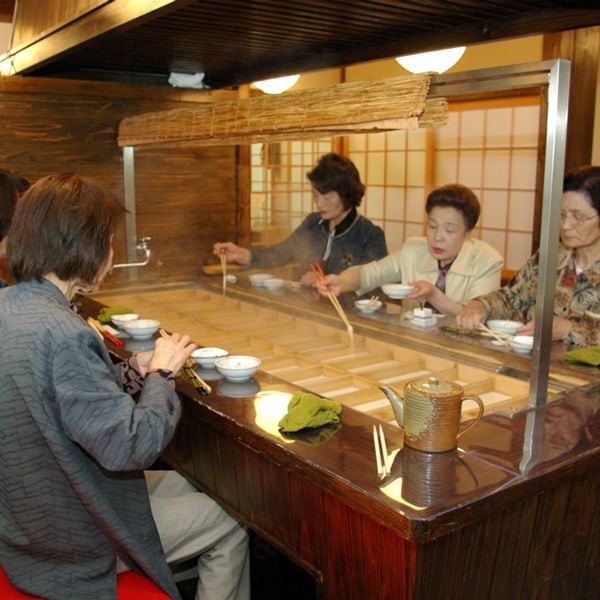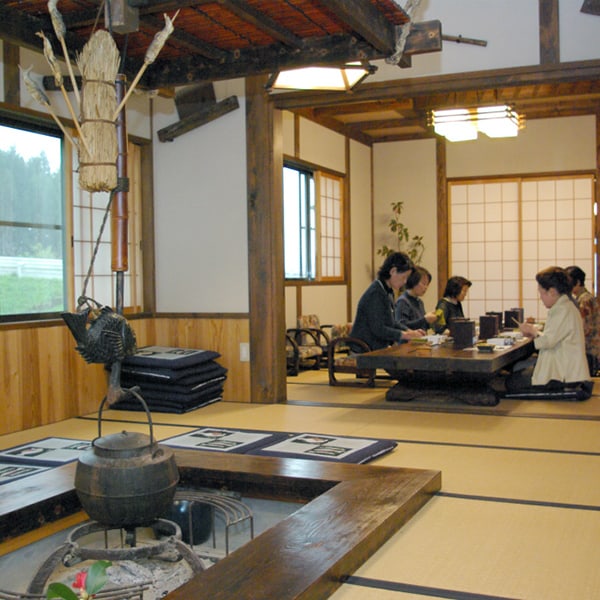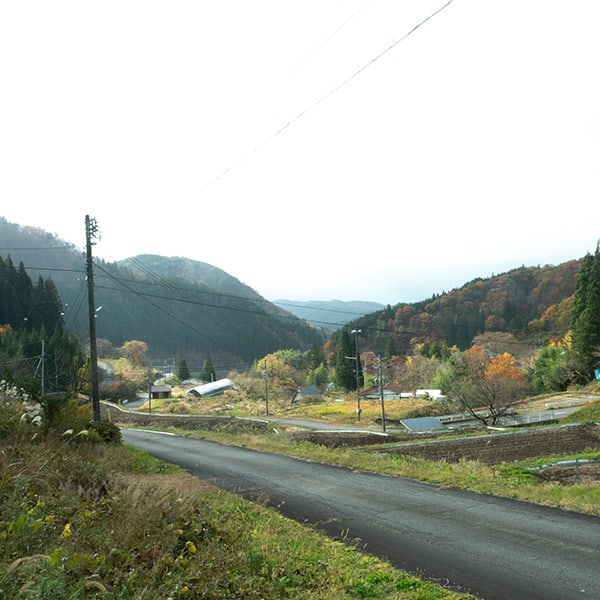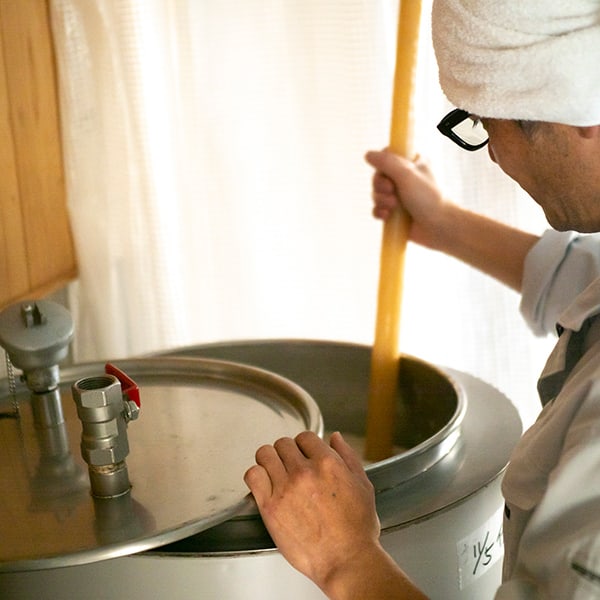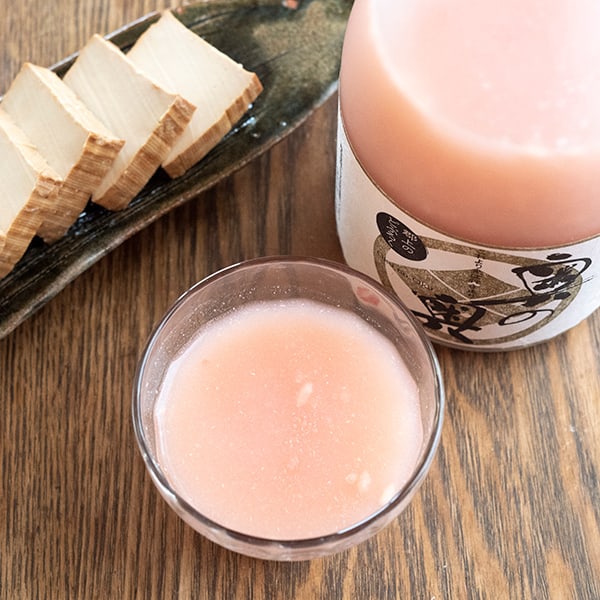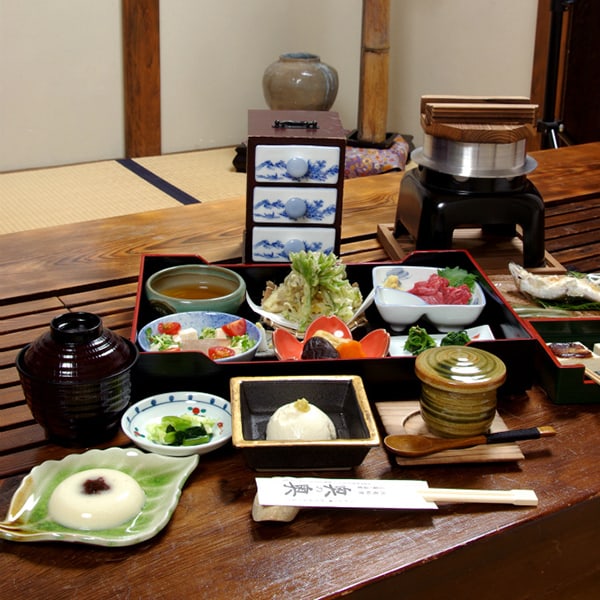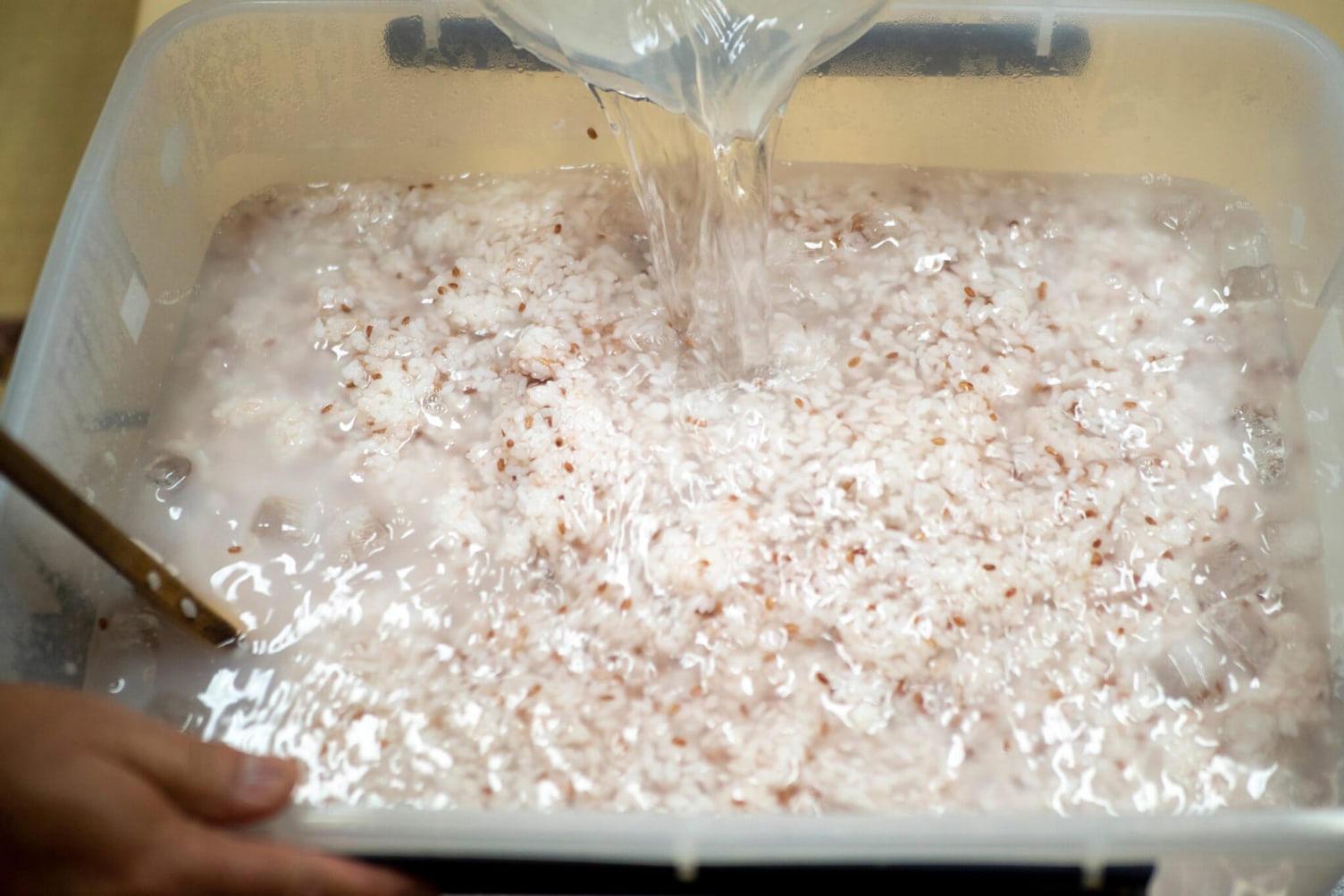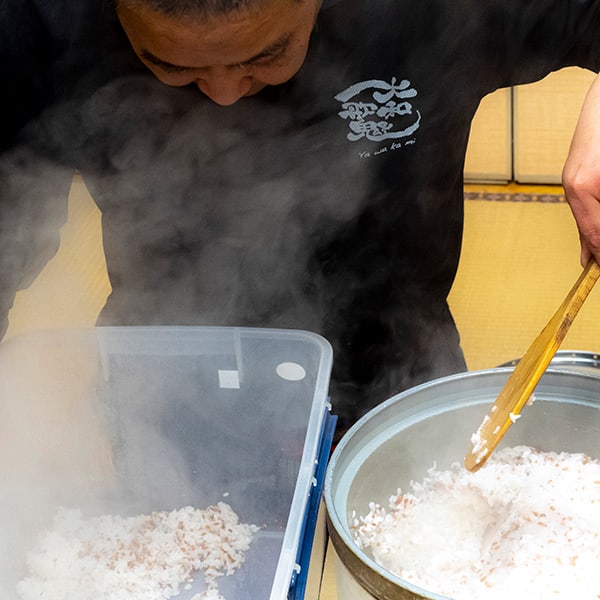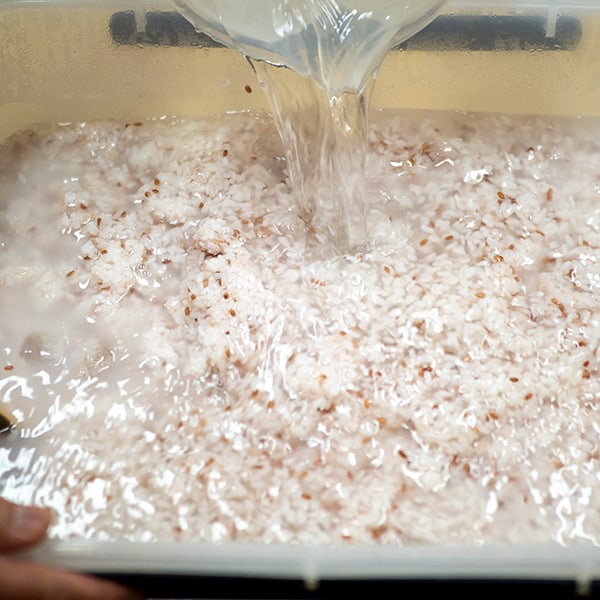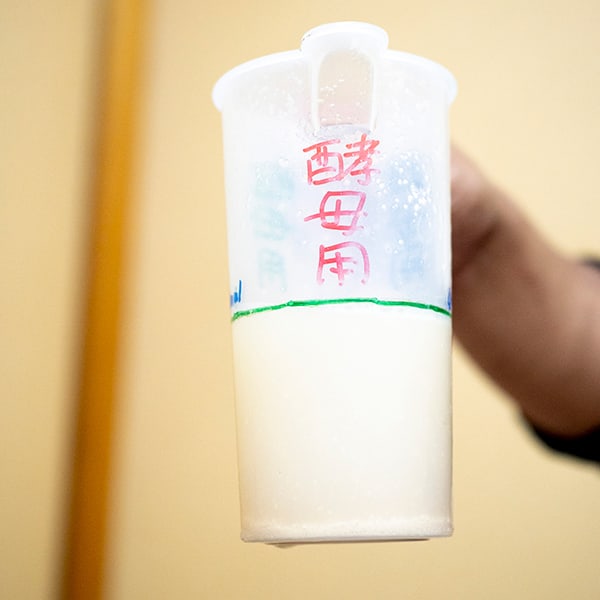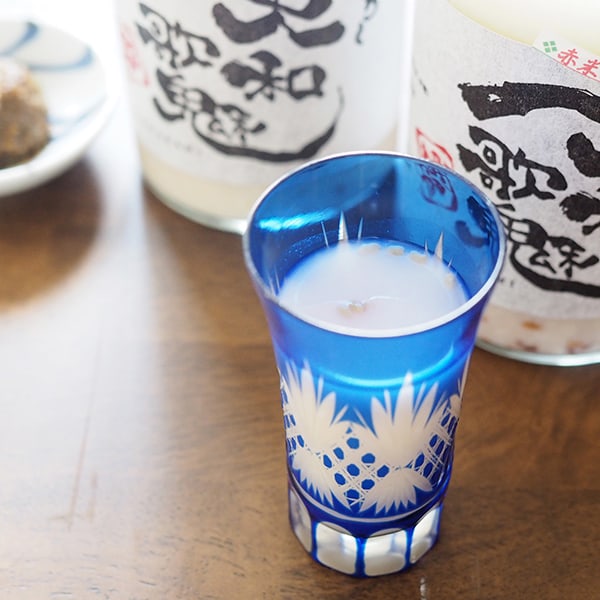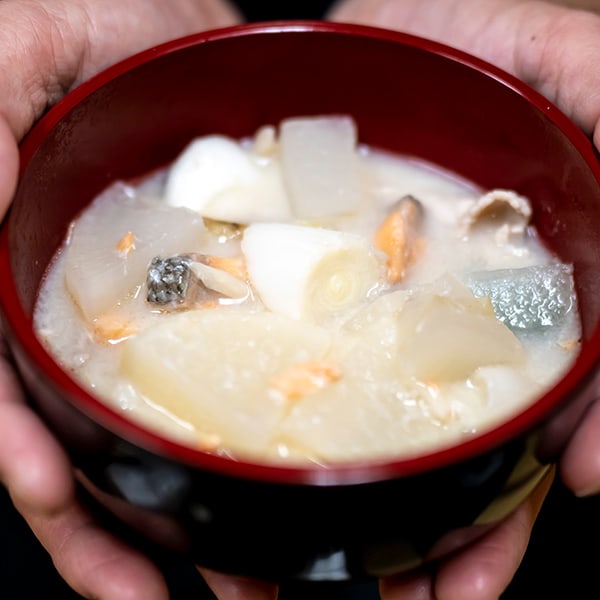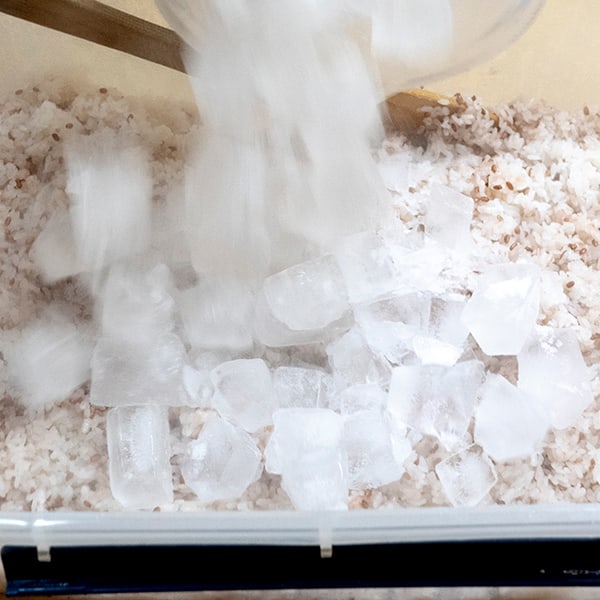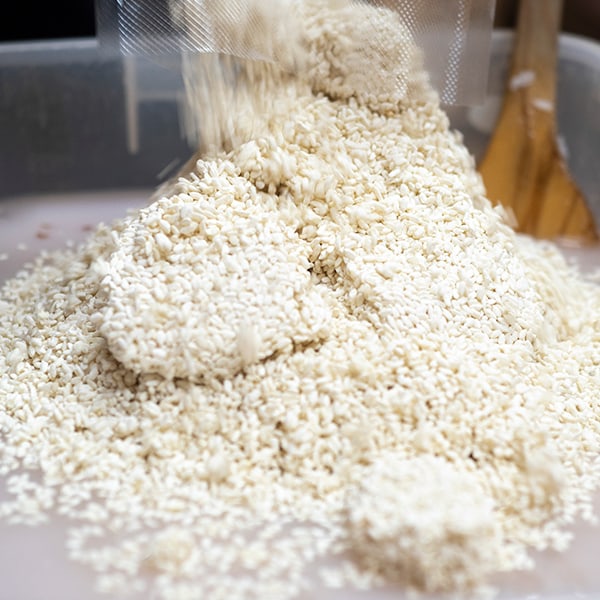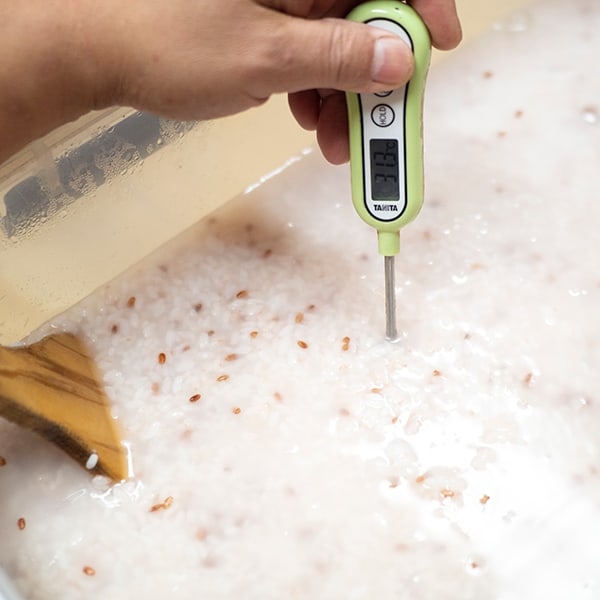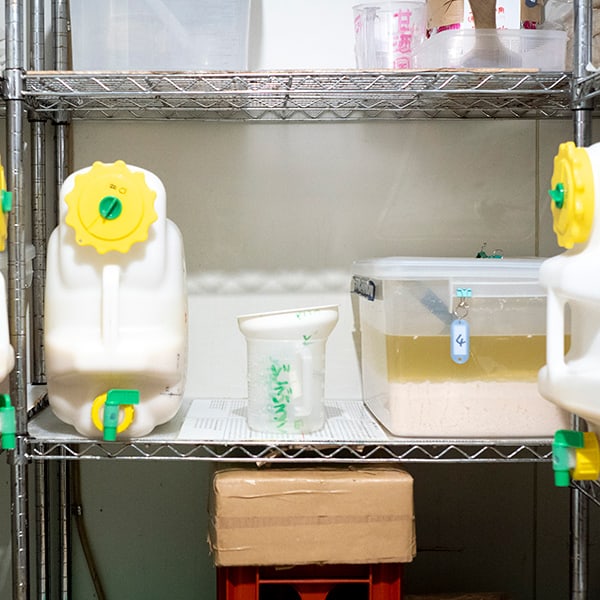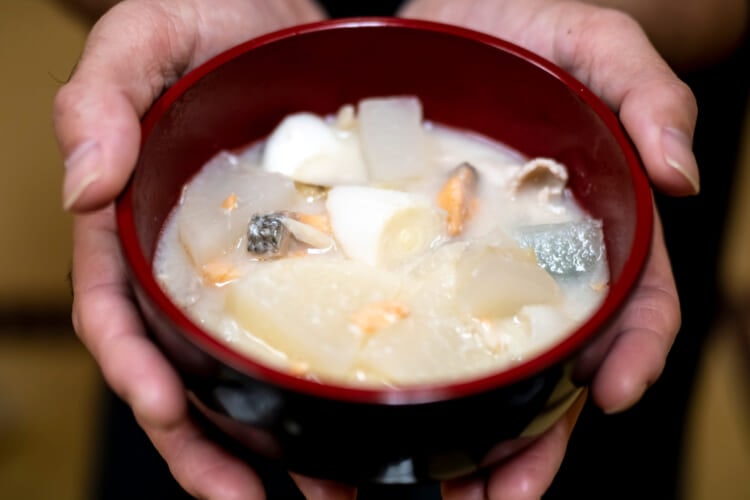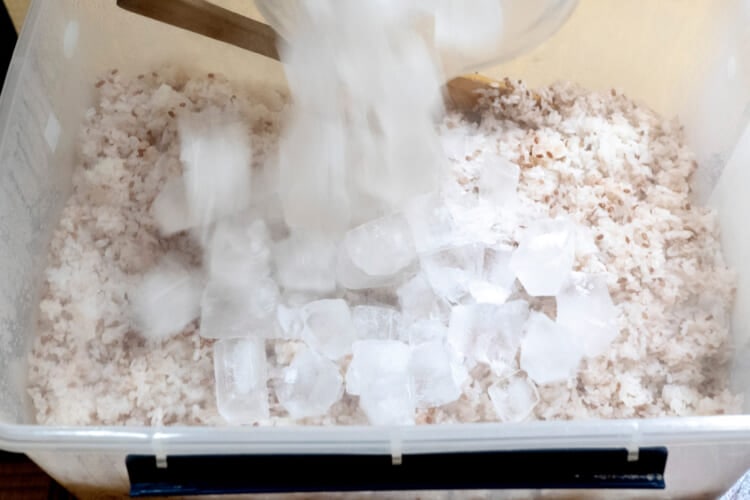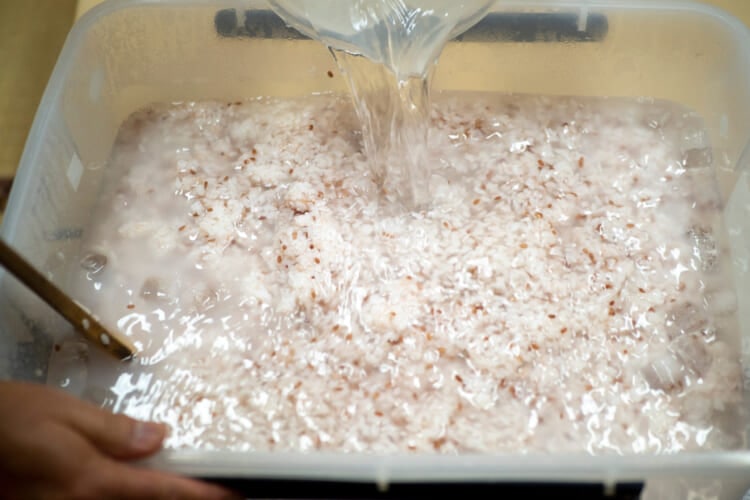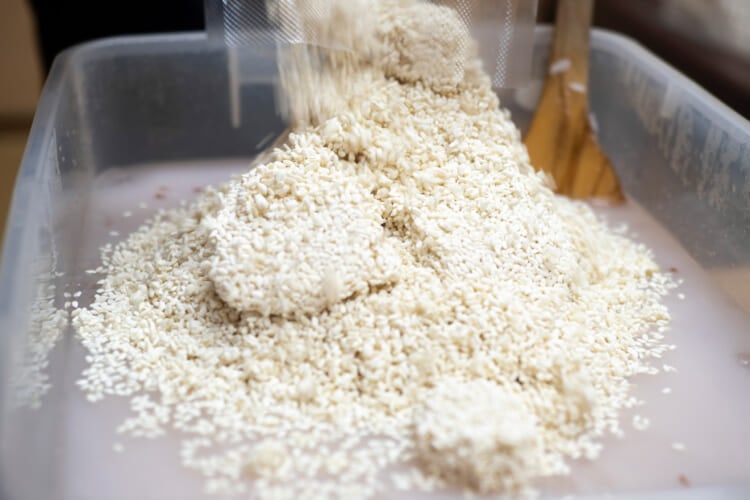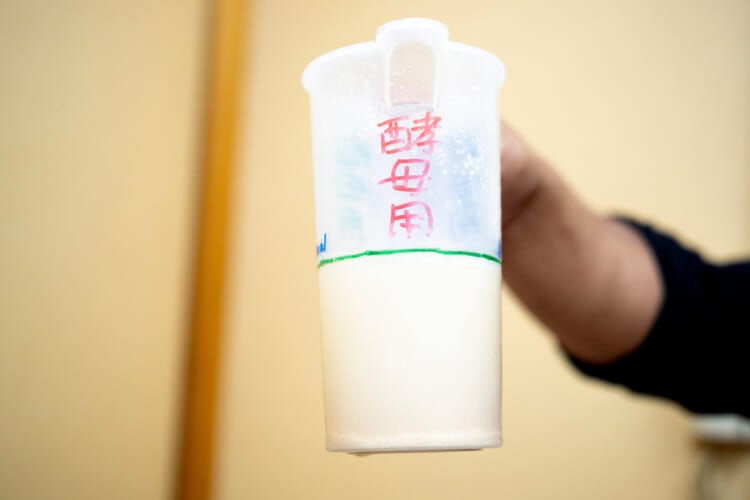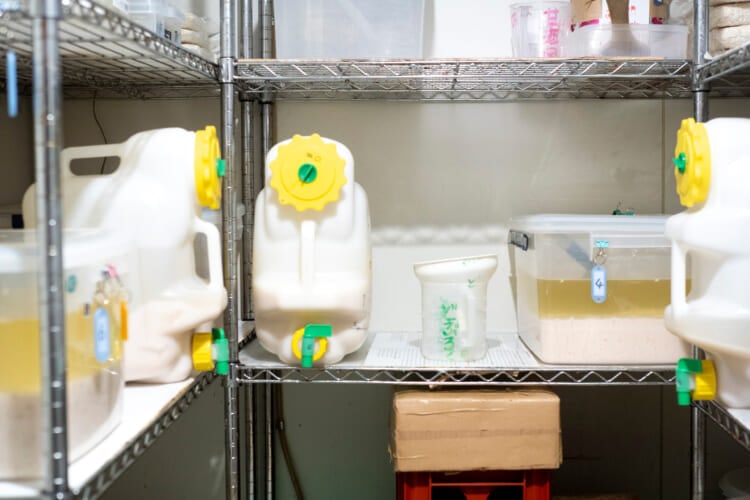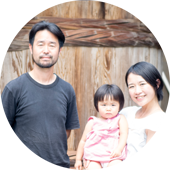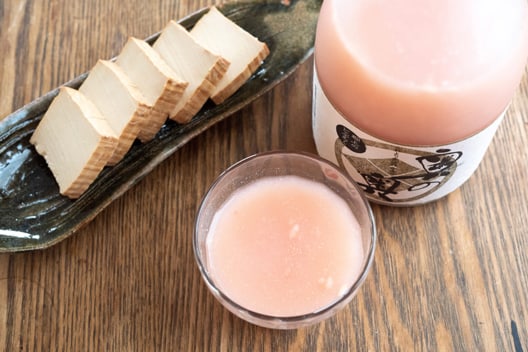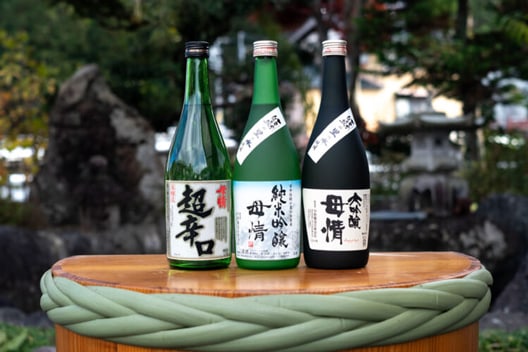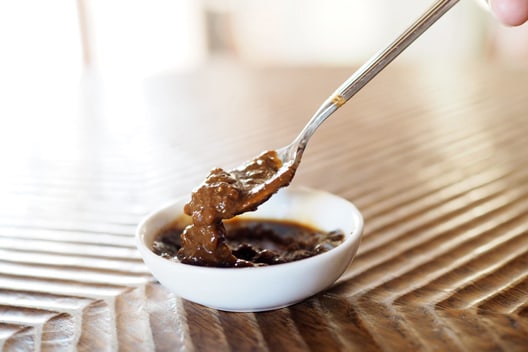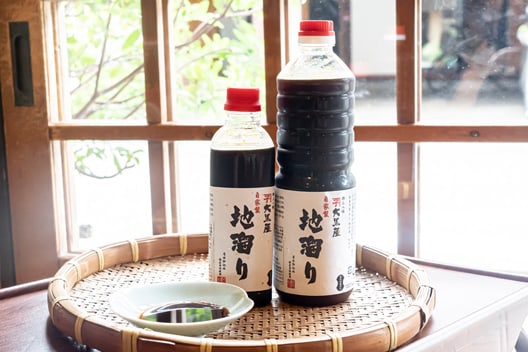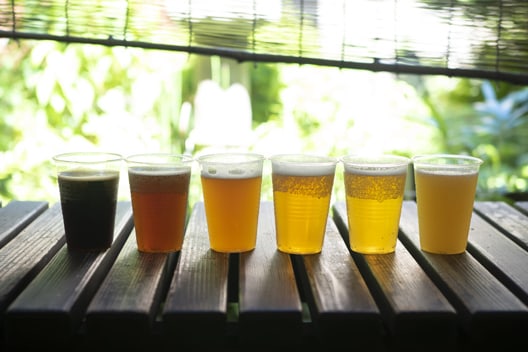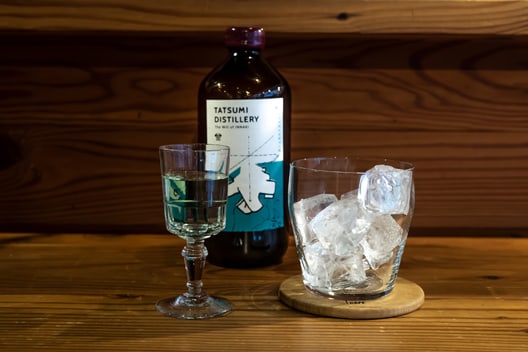Oku-no-oku
When you speak of “Doburoku”, your heart will be trickled by it immediately. Where, why and how they made it seized my imagination. When I taste a mouthful of it, I can feel how special it is.
“Doburoku” is a kind of Japanese sake without filtering. It is made with rice, koji (Malted rice) and water, the same as normal Japanese sake. Japanese sake is filtered while Doburoku is not, so it is clouded. It has a connection with Shinto ritual. During the Asuka to Nara era (592 – 794), people worshiped and dedicated Doburoku to gods for good harvest.
After alcohol was spread among the public, more people started making their own Doburoku. However, brewing sake was prohibited by the government in 1899. Many people brewing sake in secret were arrested. “Doburoku Special Region” was established for regional development in 2002. Doburoku can be brewed in this region. Shops and hotels can provide and sell it too.
Both of us have been eaten rice since childhood and dreamt of brewing our own Doburoku. When we were doing research regarding fermented food in Gujo and hearing about this Doburoku Special Zone in Gujo Yamato area, we were so interested! This “Kokindenju-no-sato Yamato Special Food and Culture Regeneration Zone (Doburoku Special Zone)” was approved in 2008. We found that “Motai Workshop” and “Mikawaya” located in Gujo-shi Yamato-cho are making Doburoku. We decided to visit and see what kind of Doburoku we can encounter.


